As winter approaches, a deceptive scam has emerged targeting vulnerable car owners seeking an easy solution to snow removal. Aggressive social media ads promise a futuristic device that can instantly melt snow using electromagnetic frequencies. However, the so-called “Electromagnetic Molecular Interference Antifreeze Snow Removal Instrument” is nothing but a cheap $1 air freshener fraudulently sold for up to $100 each.
This elaborate bait-and-switch deceives thousands into paying inflated prices for a worthless product that cannot actually remove snow. In this guide, we’ll uncover how this predatory scam works, identify the major warning signs, and provide advice for consumers to avoid getting duped.
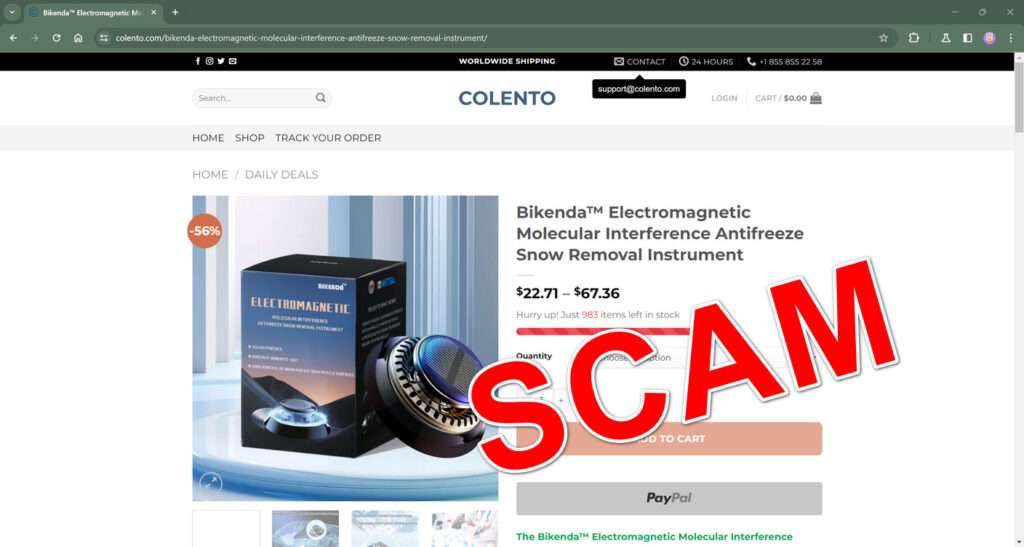
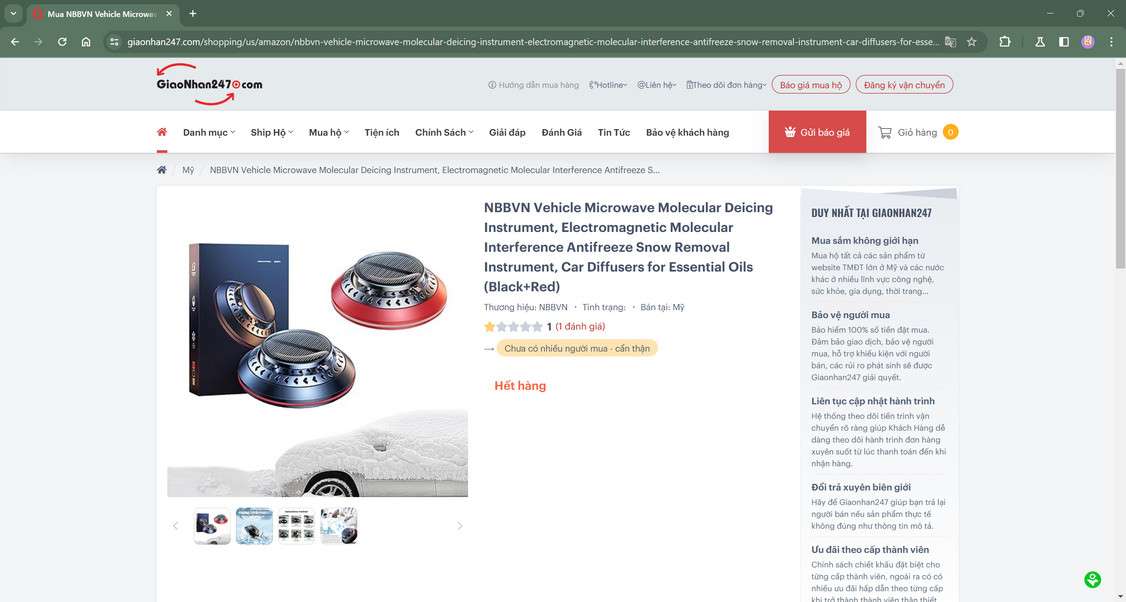
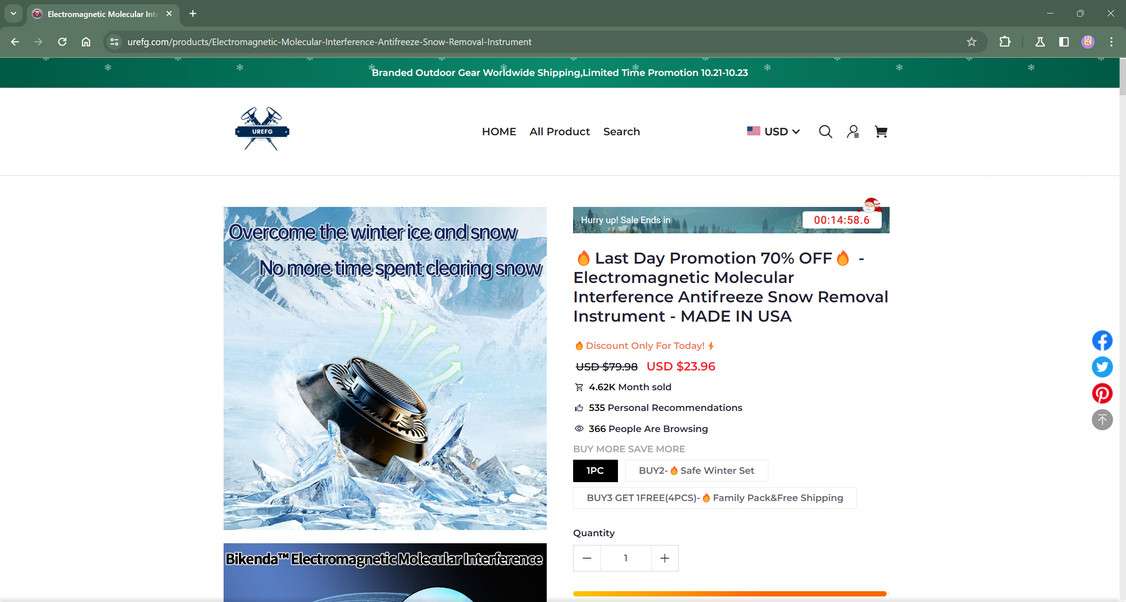
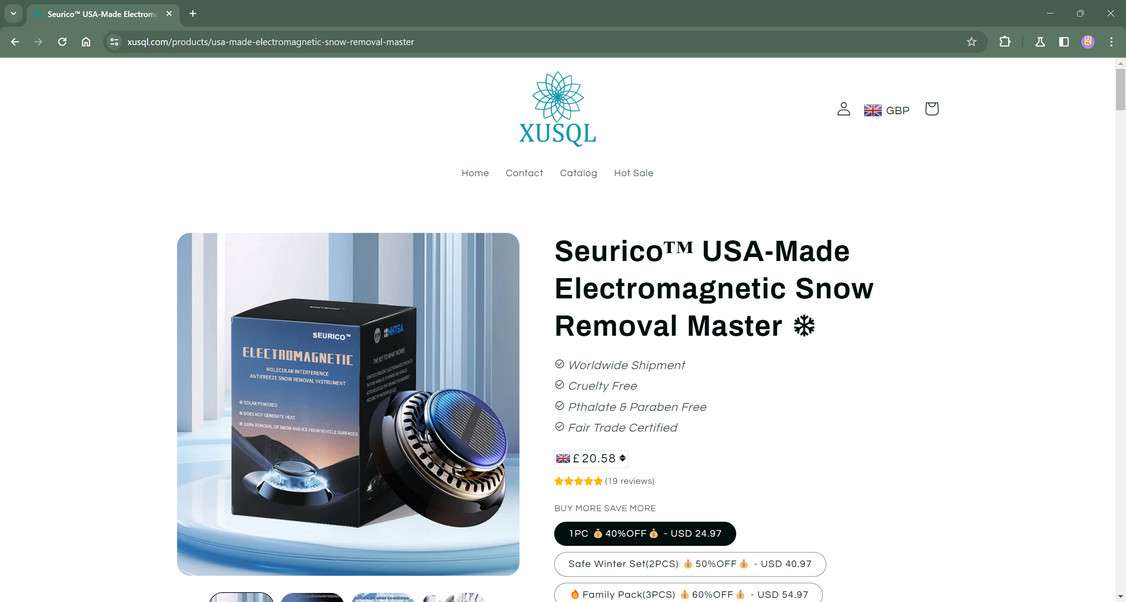
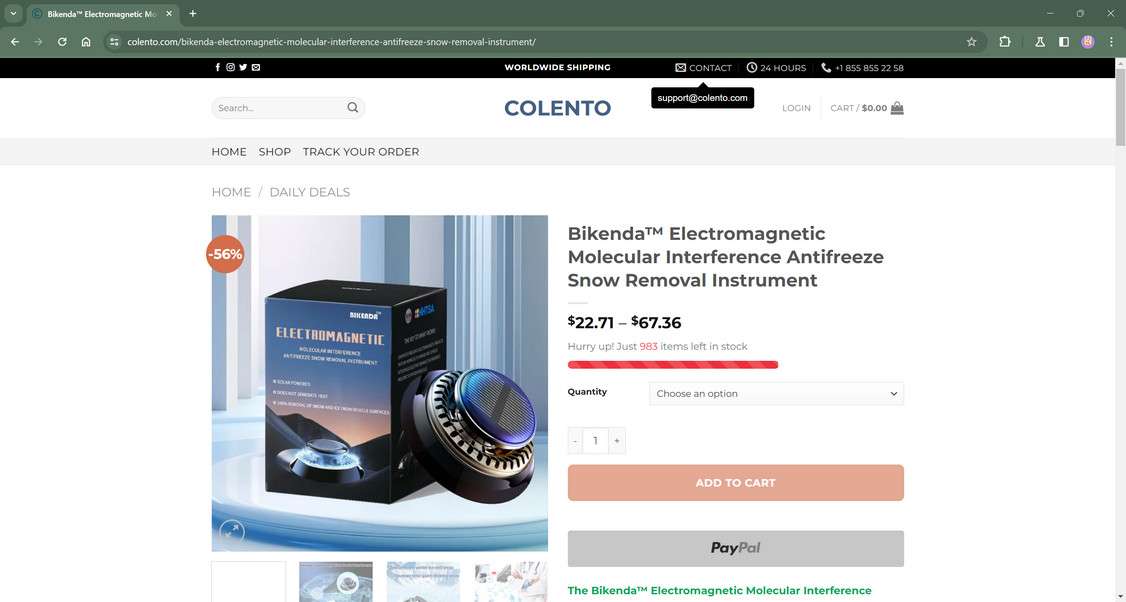
This Article Contains:
Scam Overview: Repackaged Air Fresheners Peddled As High-Tech Snow Removers
In recent months, aggressively marketed ads across Facebook, Instagram, and TikTok have gone viral promoting a supposed revolutionary breakthrough in snow removal technology.
According to flashy sales videos and websites, this small plastic device called the “Electromagnetic Molecular Interference Antifreeze Snow Removal Instrument” leverages advanced electromagnetic frequencies to instantly melt snow and ice on contact.
Marketers boast this futuristic nanotech innovation, also known as Bikenda or Drto, uses specifically tuned molecular oscillation fields to create thermal energy that essentially “boils away” frozen precipitation the moment it lands on your vehicle.
This enables drivers to eliminate laborious scraping, melting, and brushing forever. As the sensational ads claim, just clip on this magical device and watch snow and ice literally slide right off your car untouched “like it’s repelled by a forcefield!”
However, our investigation proves the so-called nanotech electromagnetic snow removers are nothing but an elaborate consumer scam.
Here’s how the deception works:
First, scammers acquire cheap $1 air fresheners in bulk from Chinese ecommerce sites like Alibaba for mere pennies apiece. These are low-quality fragrance car accessories readily available worldwide.
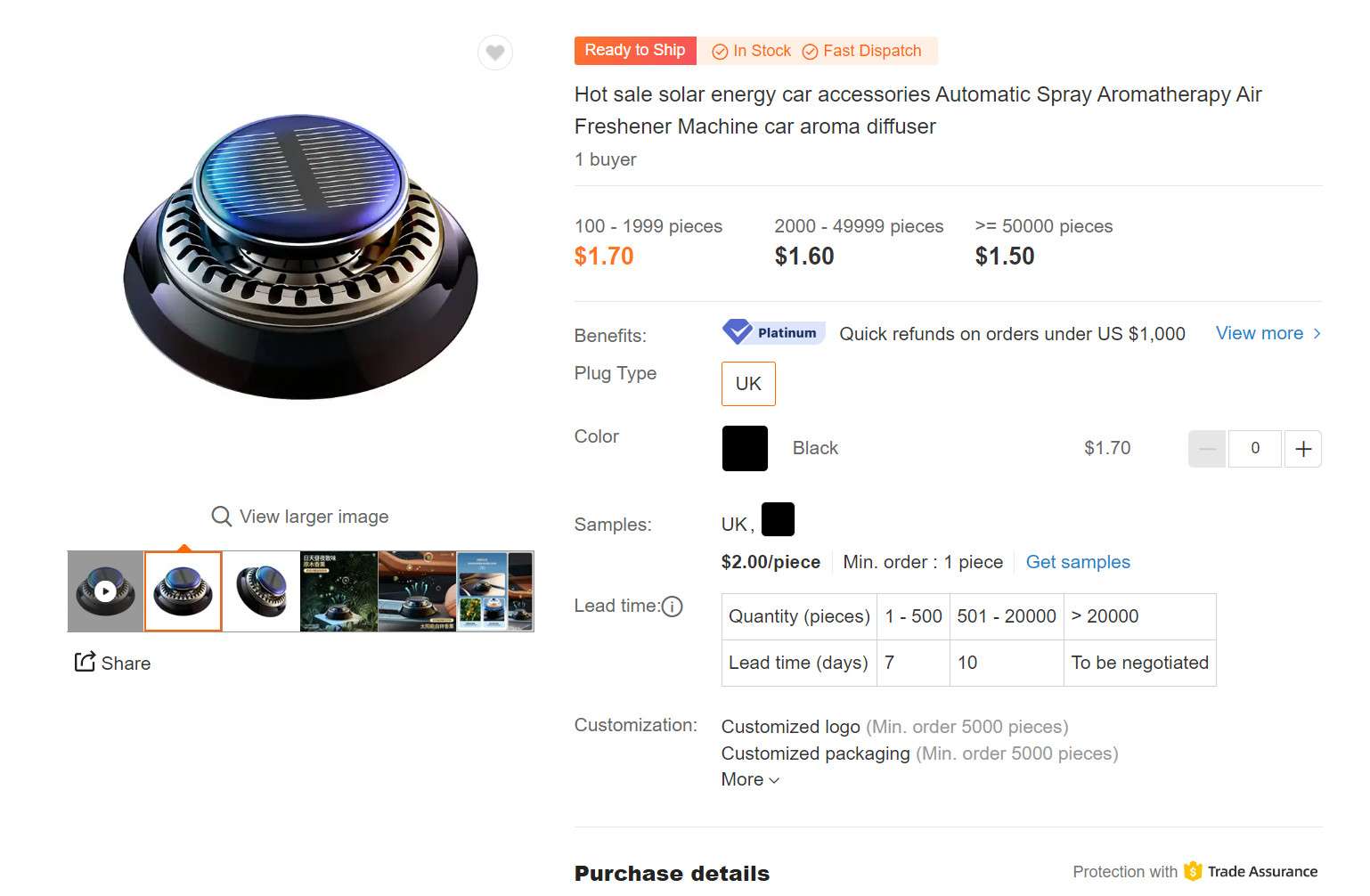
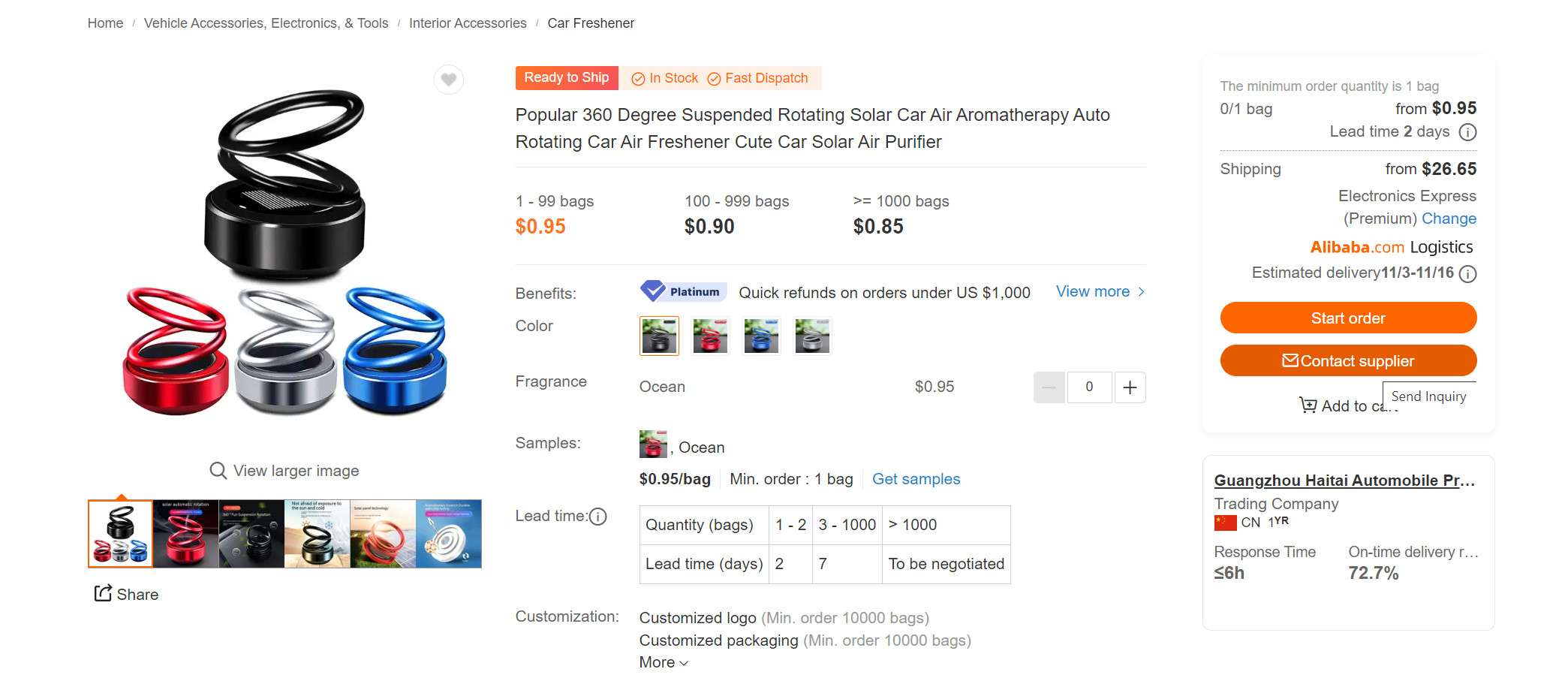
Next, deceitful operators package the nearly worthless air fresheners in Bikenda, Drto, and other branded packing to disguise their true nature.
Then, teams of savvy marketers create fake authority websites and social media ads that bombard potential customers with grossly exaggerated claims. They say these rebranded $1 plastic trinkets leverage advanced nanotechnology to deliver targeted electromagnetic frequencies that can “dissolve snow on a molecular level” upon contact.
The ads feature convincing before-and-after imagery seemingly showing the device eliminating snow and ice instantly. In reality, these images are either deceptively edited or completely fake. No actual proof exists they work as advertised.
Desperate vehicle owners searching for an effortless solution to snow removal get lured in and purchase these cheap $1 air fresheners at outrageous inflated prices around $39-$99 each.
The scammers pocket massive profits while sending absolutely worthless products to victims that possess no actual snow melting properties whatsoever. Their only function is standard air freshening and decoration.
This bait-and-switch tactic deceives thousands of people every winter seeking an effortless solution to snow removal. However, the so-called “revolutionary” Electromagnetic Snow Removal device is conclusively an elaborate hoax designed to deliberately scam consumers.
How the Elaborate Electromagnetic Snow Remover Scam Operates
Step 1) Create Deceptive Social Media Ads
The scam begins with carefully crafted social media ads containing persuasion tactics and fabricated claims. The ads target winter regions and promise the ability to “instantly melt snow” and “eliminate scraping ice.”
Eye-catching language like “NASA-engineered” and “advanced electromagnetic technology” give the appearance of credibility. In reality, no factual evidence supports these claims.
Step 2) Funnel Clicks to Enticing Sales Websites
The ads link to impressive sales websites featuring more exaggerated propaganda around the snow-melting capabilities of the cheap plastic fresheners.
Fake reviews, doctored images, and seemingly scientific terminology aim to further legitimize the scammers’ wild claims that these devices emit specialized waves that force frozen water to “slide right off” vehicles.
Step 3) Manufacture Urgency With Limited Supply Claims
Scarcity tactics pressure potential buyers to immediately purchase one of the limited inventory remaining.
Tactics include countdown timers until a supposed sale ends, notifications that “only X units left,” and language stating supplies are scarce due to extreme demand.
This manufactures urgency to purchase before the short supply runs out.
Step 4) Entice With Discounts and Bonuses
Further incentive to buy comes from promotions like 50% off discounts for today only, buy one get one free, free shipping, and additional free gifts with every order.
These time-limited bargains create a high-pressure scenario to entice people into purchasing impulsively before the deals expire.
Step 5) Maximize Profits With Deceptive Upsells
Once a person makes an initial order, they get ambushed with tempting upsells to squeeze out even higher profits, such as:
- Pushing higher priced “deluxe editions”
- Extended multi-year protection plans
- Add-on heating pads and accessories
- Recommended additional products
This further manipulates customers into overspending on even more useless items.
Step 6) Hide Merchant Identities
The scam websites conceal who is really behind them by:
- Only providing fake business names, like Brisbock LLC or Devon & Hart
- Using email addresses that mask identities, like support@techroofx.com
- Listing overseas addresses difficult to verify
This lack of valid seller details prevents authorities from tracking down the scammers.
Step 7) Ship Worthless Trinkets
After receiving payments from duped buyers, the scammers ship cheap $1 air freshener-like pieces of plastic.
These items possess no capability to emit targeted frequencies that can melt snow or ice. Their only purpose is to hang decoratively in cars.
Step 8) Make Returns Difficult
Return policies place major obstacles to prevent refunds, such as:
- Short 15-30 day return windows
- Requiring the customer to pay for return shipping
- Imposing 10-25% restocking fees
- Only offering store credit, not actual refunds
- Simply ignoring refund requests altogether
This deters all but the most persistent victims from being able to recover their wasted money.
Step 9) Quickly Shift to New Sites
To stay ahead of exposures, the scammers frequently setup new websites, domains, and social media ads.
As soon as an existing site accumulates too many negative reviews or investigations, they shift everything to a fresh domain to continue the scam.
Step 10) Rinse and Repeat
The scammers rake in substantial profits from consumers who fail to identify the ruse or struggle to get refunds. These ill-gotten gains fund new iterations of the predatory scam cycle.
This systematic deception process allows them to routinely dupe desperate car owners seeking easy snow removal solutions every winter.
Warning Signs: How to Spot the Electromagnetic Snow Remover Scam
The deceptive marketing for the “revolutionary” Bikenda, Drto, and similar electromagnetic snow removers sets off many red flags. Here are the top signs to recognize you’re dealing with a fraudulent operation:
- No Credible Proof – Nowhere do the ads and sites provide convincing evidence these plastic fresheners emit targeted waves that can melt snow and ice. No prototypes, customer reviews, or research validates their claims.
- Identical to $1 Trinkets – The advertised device itself is cheaply-made and an exact match for $1 air fresheners easily purchased on Alibaba. Not the claimed advanced tech.
- Overly Aggressive Tactics – Hard sell language, countdown timers, fake limited supply claims, and refusing returns are all highly suspicious tactics.
- No Seller Details – The websites hide their true operator identities by using fake business names and anonymized email addresses.
- Exaggerated Claims – Assertions these devices leverage “custom EM frequencies” or “molecularly disperse frozen water” are technobabble with no factual basis.
- No Negative Reviews – A suspicious lack of any critical reviews or FTC complaints can indicate fake testimonials and censorship.
- New Sites Frequently Emerge – Constantly shifting domains and social media pages indicate operators quickly abandon names once exposed.
When you see these warning signs, recognize the advertised electromagnetic snow melters are a complete scam designed to fraudulently separate consumers from their money.
Identifying This Scam on Facebook
Facebook’s enormous reach makes it a prime platform to perpetuate the Electromagnetic Snow Remover con. Here are tips to detect their deceptive Facebook tactics:
- Sponsored Ads – Be suspicious of ads promoting unbelievable claims about snow melting tech. For example: “New futuristic device melts snow instantly using targeted EM frequencies!”
- Clickbait – Headlines like “I Was Shocked When I Saw How Easily This Removed Snow From My Car” encourage clicking without skepticism.
- Sensational Images – Dramatic before and after photos showing snow magically disappeared are often doctored or stolen stock photos.
- Fake Reviews – Glowing reviews on the Facebook pages with vague details like “It worked amazingly!” may be manufactured testimonials.
- Comment Censoring – Critical comments or probing questions get deleted right away, while praise remains. This exposes their aversion to scrutiny.
- Hard Selling – Aggressive purchase urges, limited supply claims, and pressuring language are transparent sales gimmicks.
Stay alert to these tactics aimed at driving impulse buys without deeper consideration. Demand solid proof for bold claims before ordering.
Recognizing This Scam on Instagram
On Instagram, be wary of the following red flags:
- Influencer Marketing – Paid promotions by influencers presenting the devices as must-have innovations for winter. But no real testing is done.
- Aesthetic Photos – Pretty stylized photos make the product look highly appealing, even though it’s just a $1 air freshener.
- Excessive Hype – Over-the-top captions claiming the device “literally melts snow instantly!” without displaying real proof.
- One-Sided Comments – Comments seem overwhelmingly positive. Critical, skeptical remarks never approved or answered by the account.
- Follower Irregularities – Unusually high follower counts but low engagement can signal fake bot followers were purchased.
- Sales Links – Links to purchase prominently featured but no links provided to legitimate independent testing validating the claims.
If an account relies heavily on imagery over substance, think twice before buying into the hype. Demand actual evidence and transparency.
Catching This Con on TikTok
On TikTok, warning signs of the Electromagnetic Snow Remover scam include:
- Viral Hype Videos – Trendy videos touting the product rack up views rapidly but lack any real demonstrations.
- No Critical Comments – Questions and skeptical remarks get deleted, creating illusion everyone agrees it works.
- Fake Authority Claims – Videos reference nonexistent professional studies or falsified expert endorsements.
- Deceptive Captions – Exaggerated captions make outlandish claims without proof like “Snow doesn’t stand a chance against this futuristic tech!”
- Affiliate Links – Profile links to outside sales pages with financial incentives to drive purchases over honest reviews.
- Bot Followers – High follower counts but very low video view counts and engagement indicate fake bot followers.
Think critically rather than get swept up in viral hype for products promising unrealistic results. Demand legitimate proof first.
Stay vigilant for manipulative social media promotions capitalizing on visual appeal over substance. Let reason outweigh emotional appeals.
Recognizing the Deceptive Websites Peddling This Scam
Slick, professional-looking websites are created by scammers to further legitimize their false claims about the supposed snow melting abilities of the cheap plastic air fresheners.
When analyzing a website promoting electromagnetic snow removal products, watch for these common red flags:
- Exaggerated Claims – The site asserts the product leverages advanced nanotech, customized frequencies, or molecular oscillation fields without credible scientific evidence.
- Fake Testimonials – Suspicious reviews state the product miraculously eliminated all snow and ice with vague details like “It worked amazingly!”
- No Negative Reviews – 100% perfect ratings suggest censorship of negative feedback rather than a truly flawless product.
- Pressuring Tactics – Countdown timers, limited supply warnings, and urgent language pressure you to buy now before missing out.
- No Company Details – No identifiable contact info, real business names, or addresses can indicate an untraceable scam operation.
- Cookie-Cutter Sites – Very similar web templates, stock images, and text across different domain names point to a coordinated effort.
- Deceptive Images – Doctored before-and-after pictures make unproven claims about the product’s effects.
- No Return Policy – Refusal of refunds and exchanges prevents discovery of the useless product.
- Credit Card Logos – Showing major credit card logos doesn’t guarantee a site is trustworthy or legitimate.
Scrutinize both the product claims as well as the website itself when considering an online purchase. Protect yourself from clever scammers exploiting the credibility of slick websites.
What To Do If You Already Purchased an Electromagnetic Snow Removal Device
If you unfortunately already bought one of these bogus electromagnetic snow removal products being peddled under names like Bikenda, Drto, Seurico, etc., here are urgent steps to take in response:
1. Request An Immediate Refund
Contact the seller promptly and insist on a full purchase price refund under the premise the product is not as advertised. Do this as soon as possible before return deadlines pass.
Send a firm email citing the product does not perform its stated purpose of clearing snow and ice. Reiterate you expect a complete refund issued immediately.
2. Document Everything
Keep detailed records of all correspondence, including order details, confirmation emails, payment receipts, return requests, and denial responses. Ensure you can prove timely communication.
3. Escalate Your Complaint
If the seller denies reasonable refund requests, rapidly escalate your complaint through every avenue, including:
- File disputes with PayPal, your credit card company or payment processor.
- Report the fraud to the FTC Complaint Assistant and BBB Scam Tracker.
- Post details about the scam online to warn others.
- Contact the advertising platforms being used like Facebook.
- Consult your State Attorney General about possible legal remedies.
4. Spread the Word
Help prevent others from falling victim by exposing the scam through reviews on sites like TrustPilot, social media posts tagging the company, and complaints to consumer protection groups. Share your experience and warn people away.
5. Cancel Any Recurring Charges
If you enrolled in additional recurring order programs pushed during checkout like subscriptions, promptly identify these charges and cancel them through your payment provider’s interface. Stop all future billing.
6. Monitor Your Credit
Keep close watch over your credit reports and account statements for signs of any suspicious misuse of your financial information provided during the purchase process. Freeze your credit reports if concerned.
Though seeking refunds can be tedious, determined victims can frequently compel the scammers into reversing the fraudulent charges either voluntarily or via aggressive intervention of regulators and payment companies.
Expose the deception online to prevent these predators from continuing to dupe consumers desperate for easy snow removal solutions.
Frequently Asked Questions About the Electromagnetic Snow Remover Scam
The questionable electromagnetic snow melting devices marketed under various names online prompt many crucial questions for wary consumers. Here are answers to some of the most common FAQs.
What exactly is the Electromagnetic Snow Remover Scam?
This scam involves falsely advertising cheap $1 air fresheners purchased in bulk as high-tech devices that leverage “custom electromagnetic frequencies” to instantly melt snow and ice on cars. Scammers creatively repackage the near-worthless fresheners and promote them through exaggerate claims and slick websites to deceive customers into paying inflated prices up to $100 each.
What names does the fake product go by?
The cheap fresheners are disguised under various branded names like Bikenda, Drto, Seurico, Oveallgo, and other sci-fi sounding terms. The scammers frequently shift names once one gets exposed.
How does the scam work?
Through deceptive social media ads and fake authority websites, scammers make exaggerated claims that these plastic air fresheners use advanced nanotech and electromagnetic frequencies to molecularly melt frozen water on contact. Desperate customers get duped into buying the $1 trinkets at radically marked up prices. Victims receive worthless products while the scammers pocket huge profits.
What tactics do they use to promote it?
Highly aggressive marketing includes false scarcity claims, fake reviews and endorsements, misleading before/after images, pressuring countdown timers, refusing returns, and other manipulative sales ploys aimed to drive impulse purchases.
Can it really instantly clear snow and ice?
Absolutely not. The product has no special technology or snow melting capabilities. It is just a 100% ineffective plastic car air freshener incapable of impacting frozen precipitation in any way despite the bold claims.
How can I spot these scams online?
Warning signs include too-good-to-be-true claims, no negative reviews, constantly shifting domains, no seller address, vague claims of proprietary technology, and refusal to provide any real proof their product works. Always deeply scrutinize bold claims.
What should I do if I already bought one?
Immediately contact your credit card company or payment provider to dispute the charges as fraudulent. Report the deception to the BBB, FTC, consumer protection groups, and on social media to help warn others away from this predatorial scam.
How can I avoid these scams in the future?
Be skeptical of sensational claims, especially from new companies with no reputation. Thoroughly research any supposed revolutionary product before considering a purchase. Demand transparent proof from real customers that it delivers on promises. And avoid limited-time sales tactics pressuring quick purchases without due diligence.
Stay vigilant this winter season and protect yourself from predatory electromagnetic snow removal scams using emotional manipulation and wildly exaggerated claims. Make smart purchases based on logic over hype.
The Bottom Line: Avoid the Electromagnetic Snow Remover Scam’s Predatory Tactics
As the scam outlined here plainly reveals, the heavily marketed Bikenda, Drto, Oveallgo, Seurico and similar “electromagnetic snow melters” are an outright fraud exploiting vulnerable winter drivers with false promises.
Their supposed advanced technology is fiction. In reality, they ship nothing but $1 air fresheners while charging up to $100 under deceptive pretenses.
Consumers should be highly skeptical of grandiose claims that devices leveraging targeted electromagnetic frequencies or molecular disruption can instantly clear frozen precipitation from vehicles. No credible science validates this.
When confronted with unbelievable assertions that small plastic gadgets can “melt snow and ice instantly,” use common sense and critical thinking. Any suggestion otherwise is certainly deceptive marketing speak used to lure in victims.
Be especially wary of high-pressure tactics like countdown timers, limited supply claims, and refusing returns. No legitimate company hides their real identity or blocks reasonable refund requests.
In summary, do not fall prey to the Electromagnetic Snow Remover scam’s manipulative sales tactics this winter. Only proven methods like regular thorough cleaning, snow brushes, and de-icing materials can reliably keep your vehicle clear after snowstorms.










